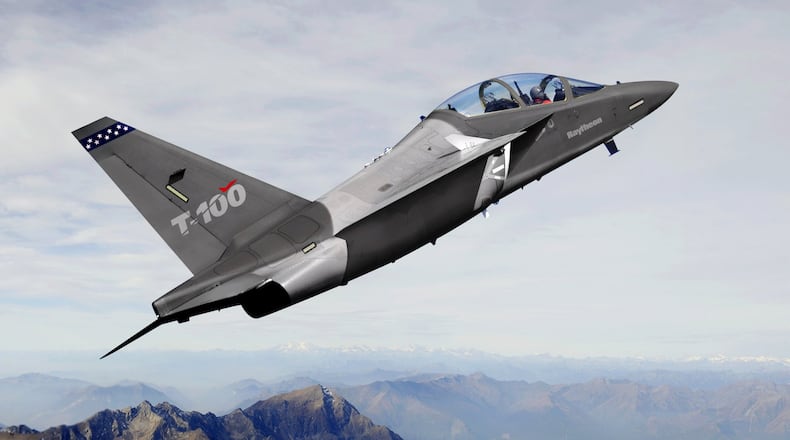“There are many, many folks interested in industry interested in winning this award,” Kevin W. Buckley, program executive officer for mobility programs at the Air Force Life Cycle Management Center at Wright-Patterson, has said in an interview with this news outlet.
The contract will cover the development of the jet and the first five test aircraft. Two contract options would span future sales to reach 350 in the Air Force inventory.
The new jet would replace the decades-old T-38 Talon, a supersonic advanced jet trainer last delivered to the Air Force in 1972. The plane, which first flew in 1959, has had multiple upgrades over the years to stay flying.
RELATED: Aerospace companies competing for next big Air Force contract
The Air Education and Training Command has about 430 of the T-38s still in the fleet to train future fighter and bomber pilots. Buckley has said the Air Force needs a newer trainer able to sustain high-G conditions to better prepare pilots to fly the latest fifth-generation aircraft, the F-22 Raptor and the F-35 Lightning II.
Among the industry teams in the jet showdown were expected to include Boeing and Swedish-based Saab in a new single-engine, twin-tailed prototype; and Northrop Grumman Corp., offering a new design in partnership with BAE Systems and L-3.
Other aerospace makers were banking on existing jets flying around the world, such as Lockheed Martin and Korean Aerospace Industries to produce the T-50A; and Raytheon and Italy’s Leonardo to assemble the T-100 jet trainer.
Sierra Nevada Corp. and Turkish Aerospace Industries may join the competition, according to Aviation Week & Space Technology.
The new jet would begin operating in 2024, or possibly earlier, and deliveries would continue over a decade.
About the Author
